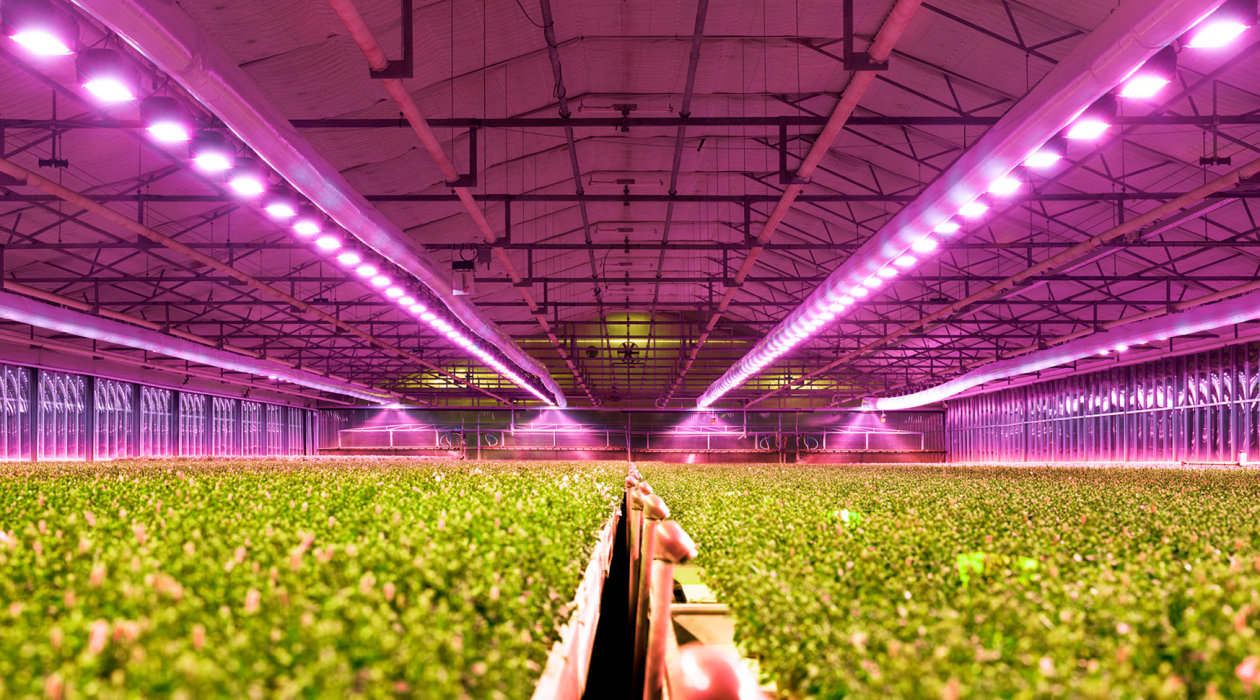Statista recently published findings on indoor farming. The following article outlines statistics on indoor farming, revenue, vertical farming, and grow lights:
Indoor farming is hardly a modern concept; it has existed in the form of greenhouses for centuries, but in recent years indoor farming has garnered new interest and popularity. Indoor farming has several distinct advantages to outdoor farming. Crops grown indoors are not as affected by bad weather; they are not limited to receiving light only during the daytime; and crops that traditionally could only be grown in certain parts of the world are now able to be grown practically anywhere. If indoor farming is able to expand and gain traction, it will surely have massive implications for the global food industry.
STATISTICS ON THE TOPIC
As of 2016, there were 2.3 million square feet of indoor farms worldwide. This area is expected to grow substantially, with estimates ranging between about 8.5 million square feet to 16.55 million square feet by 2021. The average yield per acre of vine crops, such as tomatoes, and greens grown in indoor farms is over ten times higher than that of outdoor farms, demonstrating that indoor farming is a much more efficient use of space compared to traditional outdoor farms.
Although there are dozens of different crops grown in indoor farms, from flowers to lettuce, the most lucrative by far is cannabis, which generates about 380 U.S. dollars in revenue per pound, followed by herbs and microgreens at about 13 dollars per pound. However, in terms of average annual revenue per square foot of crop, vine crops bring in the most revenue with 175 U.S. dollars per square foot per year.
Among all innovations in the indoor farming industry, vertical farming is one of the most influential. Vertical farming is, as its name suggests, the practice of growing crops in vertically stacked layers. It has been praised as a much more efficient use of space than traditional farming which uses massive areas of open land. Vertical farming could be implemented in major metropolitan areas, or even in shipping containers. In 2016 the global vertical farming market was worth about 1.5 billion, and it is projected to grow to about 6.4 billion dollars by 2023.
This text provides general information. Statista assumes no liability for the information given being complete or correct. Due to varying update cycles, statistics can display more up-to-date data than referenced in the text.
Indoor farming
- Projected area expansion of indoor farming worldwide 2016
- Yield for indoor and outdoor farming worldwide 2015, by crop type
- Labor demand for indoor farming worldwide 2016, by size
- Planned improvements in indoor farming worldwide 2016
- U.S. indoor farming market information 2016
Revenue
- Revenue per pound of indoor farming crops worldwide 2016, by type
- Revenue of indoor large scale farming worldwide 2016, by crop type
- Revenue of indoor small scale farming worldwide 2016, by crop type
- Revenue of indoor and outdoor farming worldwide 2016, by crop type
Vertical farming
- Global vertical farming market projection 2013-2020
- Global vertical farming market value 2015, by region
- Global vertical farming revenue 2016, by technology
- U.S. vertical farming market value 2013-2024, by technology
- Canadian vertical farming market size 2014-2025
- Canadian vertical farming market value 2014-2025, by technology
Grow light
- Global grow light market value 2013-2023, by technology
- Global LED grow light market value from 2014 to 2021
- Global horticultural lighting revenue 2017-2027, by segment
- Lighting supplements used for indoor farming worldwide 2016
- Grow light market value in the U.S. 2014-2025, by technology
